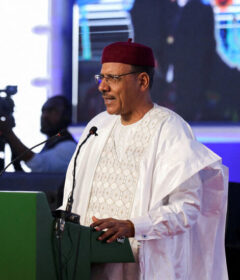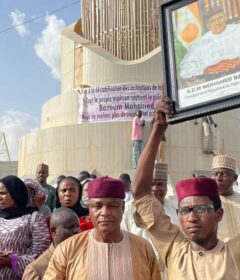Namibia: Land And Property Rights
Namibia was a German colony from 1884 to 1914. In the decades that followed to independence in 1990, it was administered by South Africa, which imposed its oppressive system of apartheid on the population. During this time, thousands of Namibians were expelled from their lands. To this day, a large portion remains under the control of Germans and South Africans, or other foreigners: approximately 70 percent of Namibia’s farmland is owned by whites. According to the Namibia Statistics Agency, socially disadvantaged black or colored citizens own only 16 percent of the land.
The Namibian government has sought to correct past colonial wrongs and pursue social equality. Up until now, white farmers only had to sell their lands back to the state on a voluntary basis. But this principle had not worked. By 2020, Namibia plans to return 43 percent of its 15 million hectares of farmland to the black population. At the end of 2015, only 27 percent of the land was redistributed, according to the Namibia Agricultural Union.
Namibia is the least densely populated country in sub Saharan Africa – average population density is only 3 people per square kilometre. Its 2.5 million inhabitants are equally split between urban and rural areas. High income inequality means that, despite a GDP per capita of over US$10,000 in 2015, 13% of the population live in extreme poverty. Low rainfall and poor soil mean that agriculture in Namibia is difficult, and rural households struggle to generate income from farming, although 94% identify agriculture as their main activity.
Namibia has a relatively new formal legal framework for land rights; in many cases, it continues to acknowledge aspects of customary law. In most communal areas, traditional leaders continue to control the allocation and use of land, applying customary law under the oversight of the Land Boards. Despite various laws granting women equal rights to own land, most women obtain access to land through their fathers prior to marriage and through their husbands after marriage, with men deemed to be the owners and controllers of land in most parts. However, there are signs of positive change towards greater de facto equality in the last decade.

Statistical Analysis
The Prindex project shows that 32% of respondents felt insecure about their tenure rights in 2018 – an equivalent of half a million people aged 18 or over, and the third highest out of the first 15 countries surveyed. Sixty three percent of the sample interviewed felt secure about their property rights and the remaining 5% refused or did not know how to answer the question. In terms of insecurity, two regions stand out: in Kunene in the north of the country and Ikaras to the south, less than 10% of respondents reported feeling insecure.
The tables and diagrams below show key Prindex results for Namibia or you can download an infographic.



Source: Read Full Article


